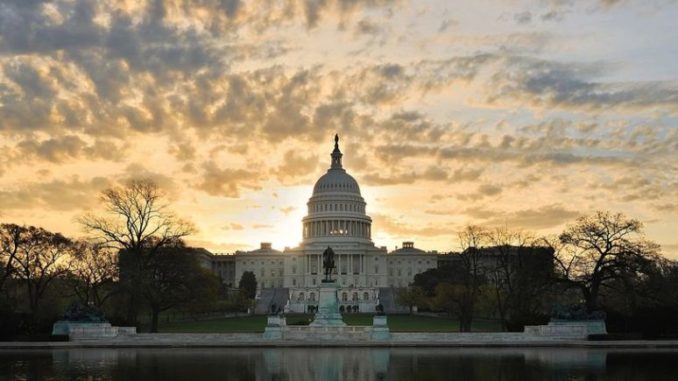
Today, President Trump finds himself in a predicament of his own making. Worse, he finds himself locked in a battle far more about his own “job security” than border security.
Back on December 11, he publicly committed to shutting down the government over a matter that, in the whole scheme of the federal government’s activities and priorities, is incredibly trivial. “If we don’t get what we want… I am proud to shut down the government…,” he declared. Thus, he immunized the Democrats of any responsibility for a shutdown. The “Trump Shutdown” commenced when appropriations ran out for roughly a quarter of the federal government at the end of December 21.
Politically, there never was any need to link Trump’s desire for border wall funding to the larger appropriations process. He could have waged the fight, spoken to the nation, and worked to build support for his project, all at far lower political risk. Instead, he artificially linked a political matter over which there is fundamental ideological disagreement to funding to keep the federal government running. That linkage can’t erase the very basic differences and have precluded significant funding for the Trump border wall.
What about border security or, even more broadly national security? The border security “menu” has many options. Those options include expanded use of e-Verify, enhanced use of technology, increased border enforcement and immigration processing manpower, among others. Trump is essentially demanding that Congress purchase a single option from that menu, an option that Congress does not wish to buy. Worse, he is demanding that they do so under the threat that he will not allow a quarter of the federal government to function. Coercion does not work well in consumer markets. It won’t get Trump very far in the policy market.
His demand is unreasonable. His threat is wildly disproportionate to the end he is seeking. His shutting down one quarter of the federal government is extreme.
There is no compelling emergency or other exigent circumstances that requires such a drastic measure. The foolishness of his extreme course is made even more evident from the existence of numerous viable substitute approaches for improved border security over which political consensus is possible. Further, those substitutes might be available at a lower cost and they might be implemented immediately than the border wall can be constructed.
So, will President Trump back off his latest demand for $5.6 billion? The probability of that outcome has diminished, as his political allies such as Senator Lindsey Graham (R-SC) continue to counsel rigidity.
So how does the Trump shutdown end? At least two clear possibilities exist.
One scenario involves a sufficient number of Republicans abandoning Trump and throwing their weight behind a clean funding bill to break the Senate logjam and provide a veto-proof margin of passage. With each day a quarter of the federal government is shut down, pressure for a resolution continues to mount.
Recent polling revealed broad public opposition to a shutdown, as well as a majority of respondents’ holding President Trump/Republicans responsible for a shutdown. Over time, fearing that an indefinite, unpopular, and increasingly harmful shutdown over a relatively trivial but deeply personal matter for the President could lead to a wipeout in the next election leading to possible Democratic super-majorities in both Houses of Congress, enough Republicans will conclude that President Trump has sent them on a political kamikaze mission. They will be unwilling to run the risk of their own political demise for the President’s benefit. As viable and politically-feasible border-enhancing alternatives to the Trump border wall exist, they will abort the President’s political crusade.
The second scenario involves an agreement with the Democrats, but at a steep policy price. Far from weakening the Democrats’ bargaining position, Trump’s diminishing room for maneuver is increasing their leverage. It is creating a situation where he needs a deal, but has little remaining flexibility. Under such circumstances, the Democrats can ask for far more than they might otherwise attain knowing that the President needs a deal far more than they do.
What then might the Democrats seek in exchange for the $5.6 billion Trump is currently demanding for his border wall? Numerous possibilities exist. Democrats could seek a full-scale DACA resolution that provides a clear and relatively short path to citizenship for the DACA population. They could seek that the border wall-funding bill reinstate provisions of the Affordable Care Act that had been weakened or eliminated under the President’s executive orders and the 2017 tax law. Those are two examples of possible terms that the Democrats could seek. Additional possibilities exist.
What is clear is that the Trump shutdown will end. The federal government will not remain shuttered indefinitely. Unless he abandons his current course, President Trump will either strike a deal with the Democrats at a very high price to end the shutdown or he will eventually suffer an erosion of Republican support that forces an end to the current shutdown without his receiving the $5.6 billion border wall funding he seeks.
How could President Trump have miscalculated so badly in linking funding for his coveted but politically-controversial wall to the federal government’s ability to continue to function? How could he embrace a growing body of bad political advice that deprives him of his room for maneuver? Then again, how could he bankrupt the Trump Plaza Casino and Hotel and the Trump Taj Mahal in Atlantic City?
